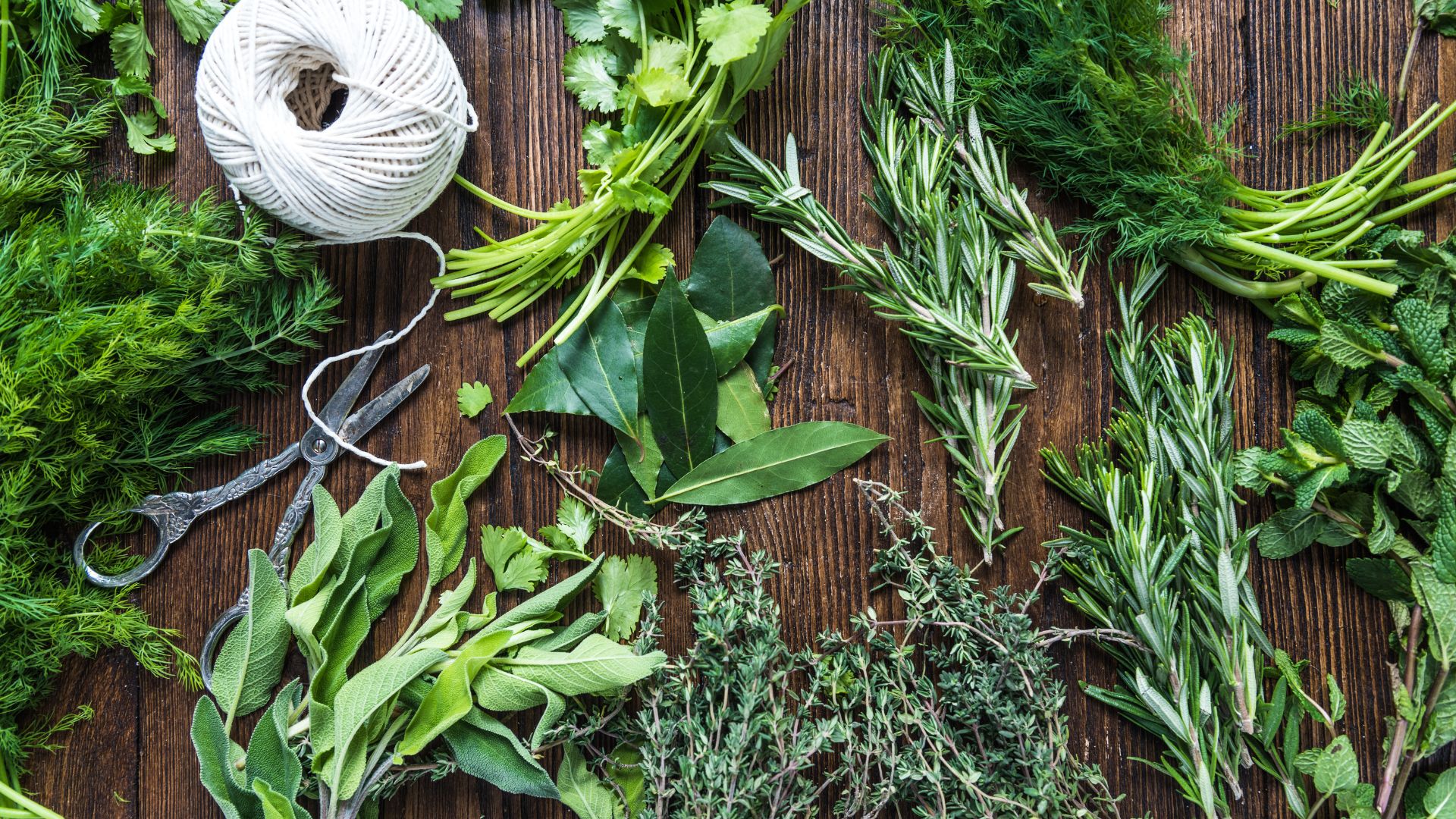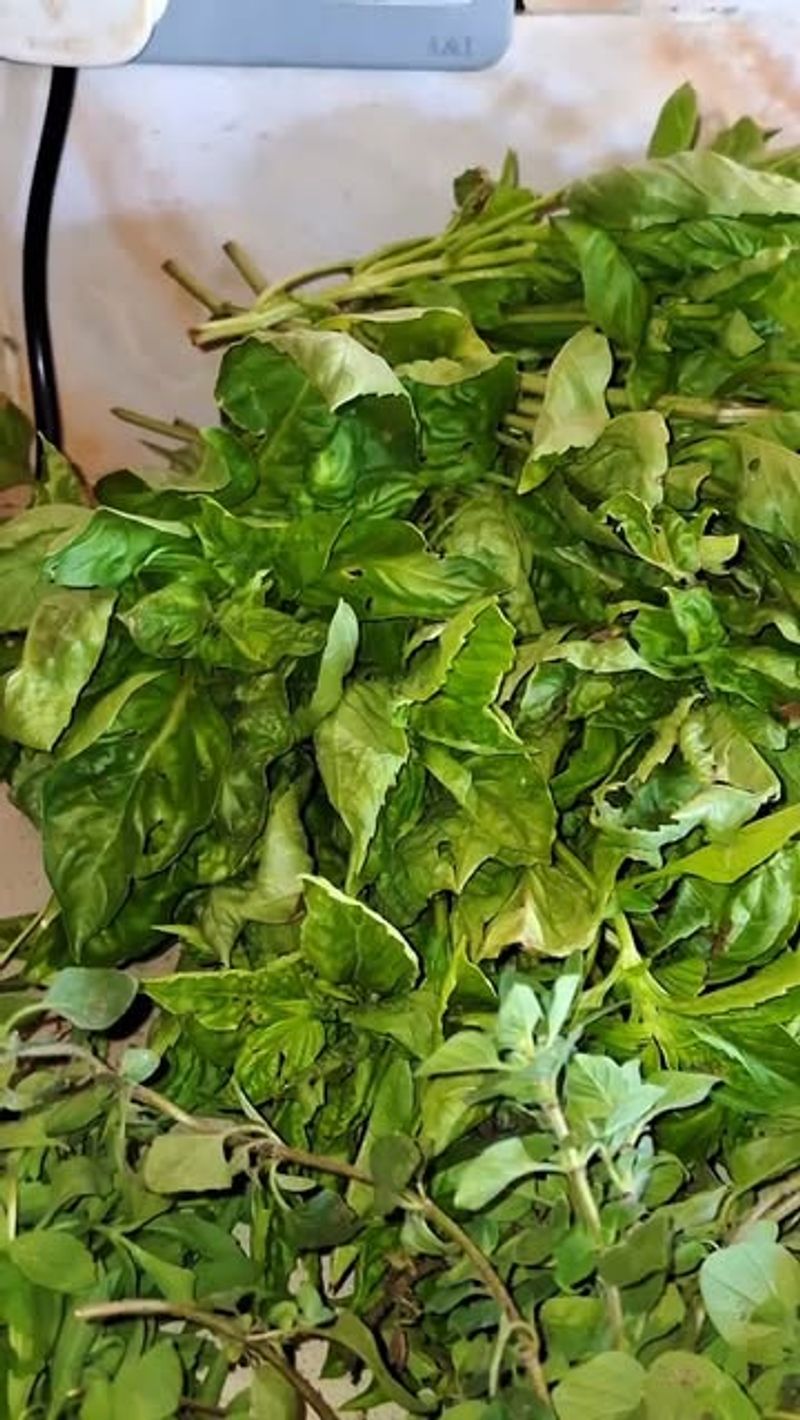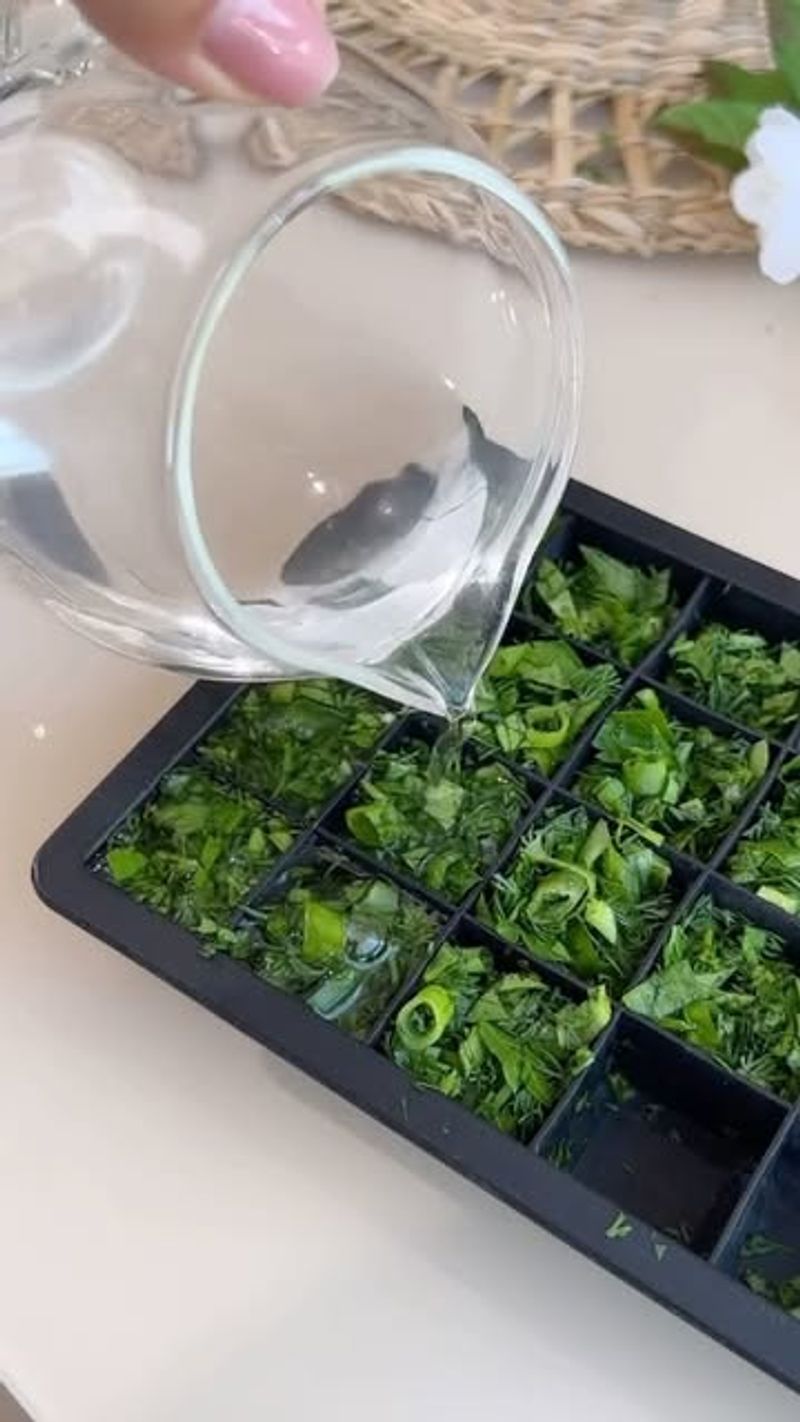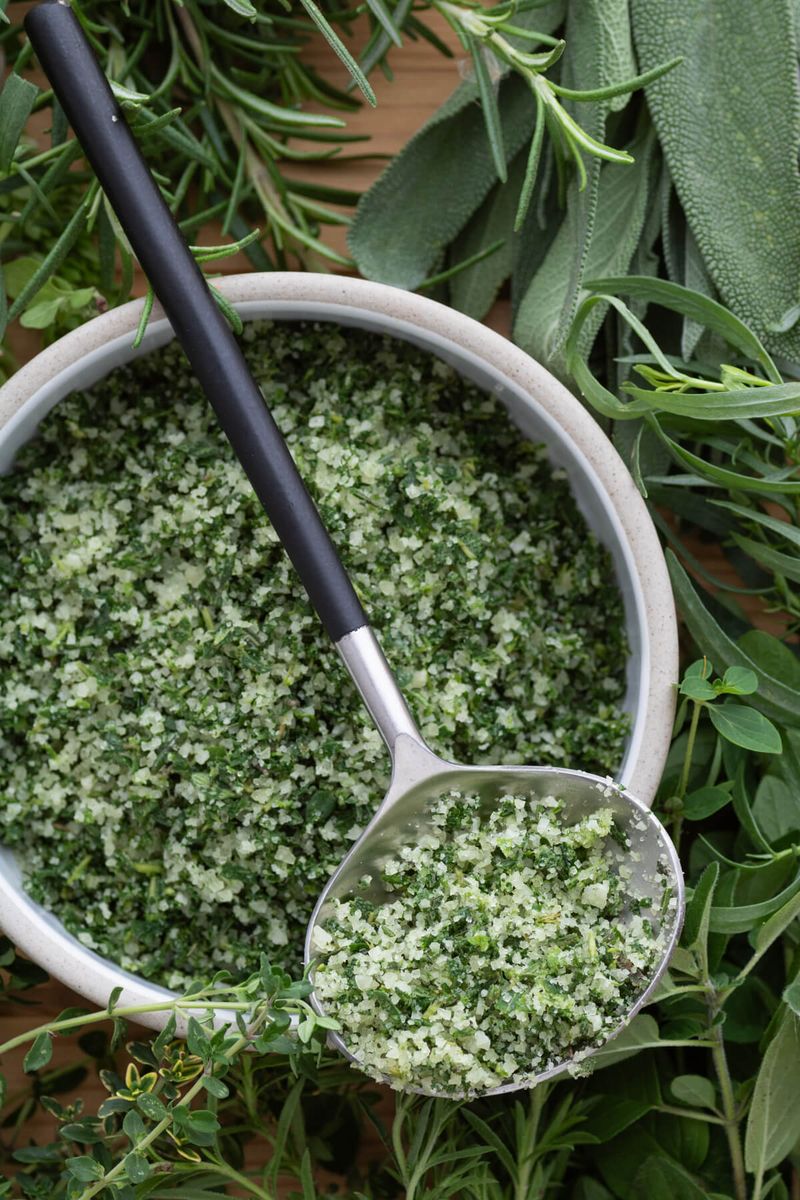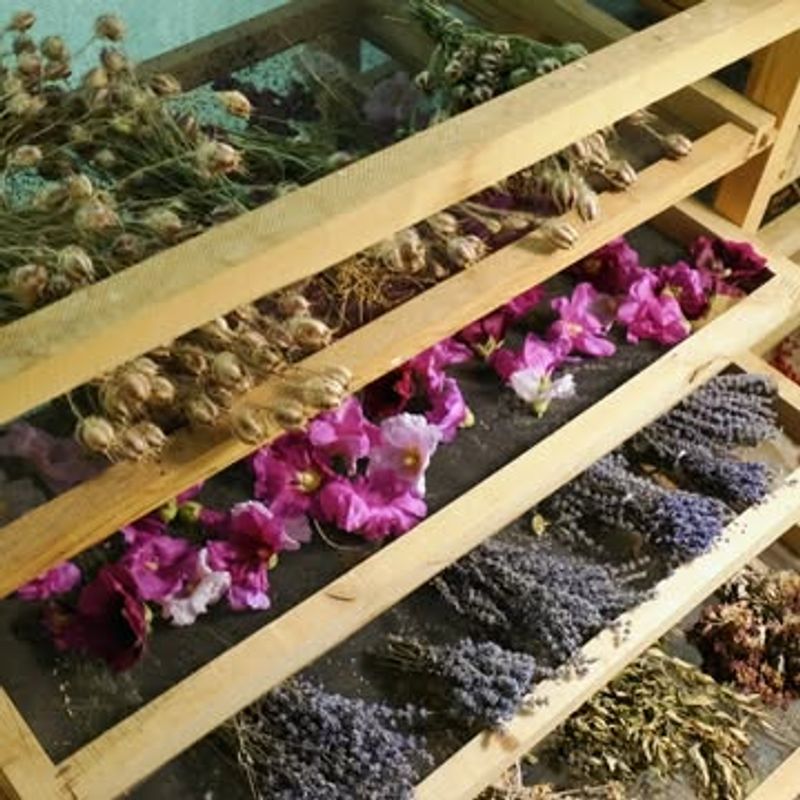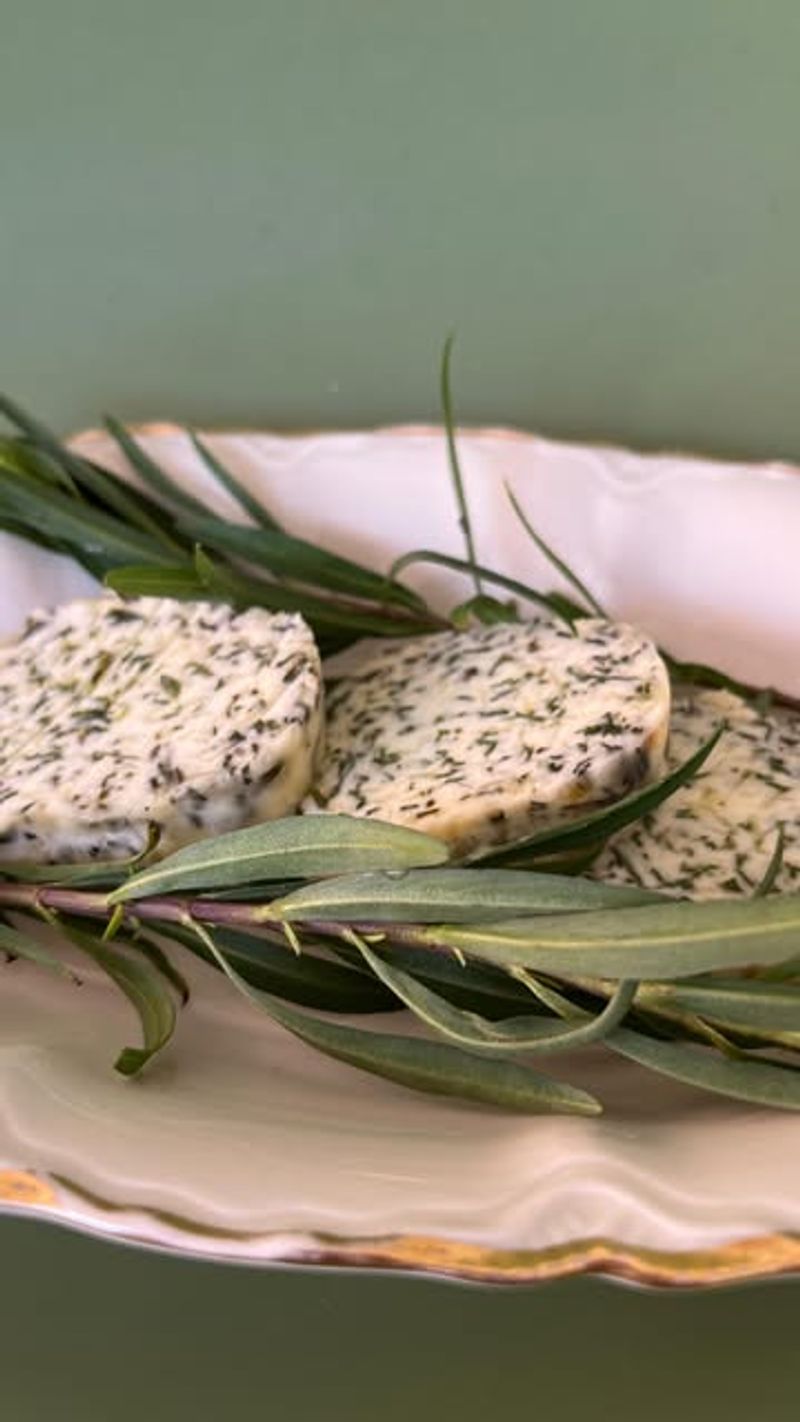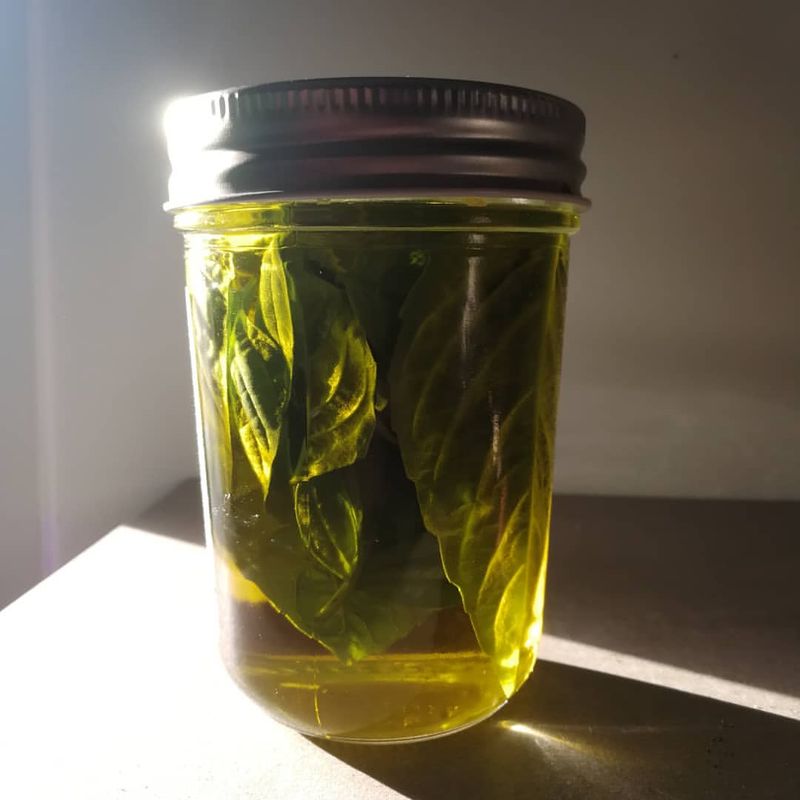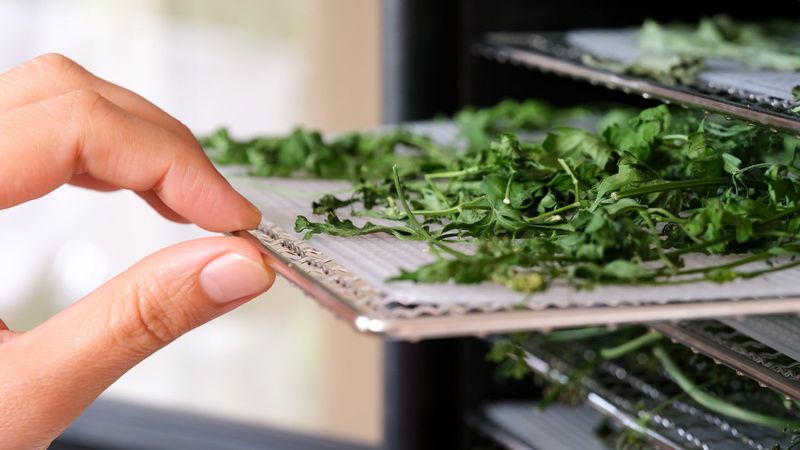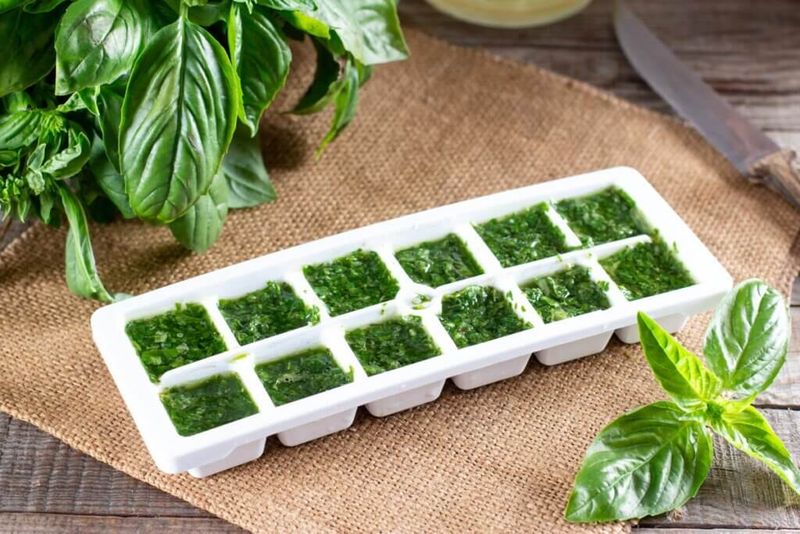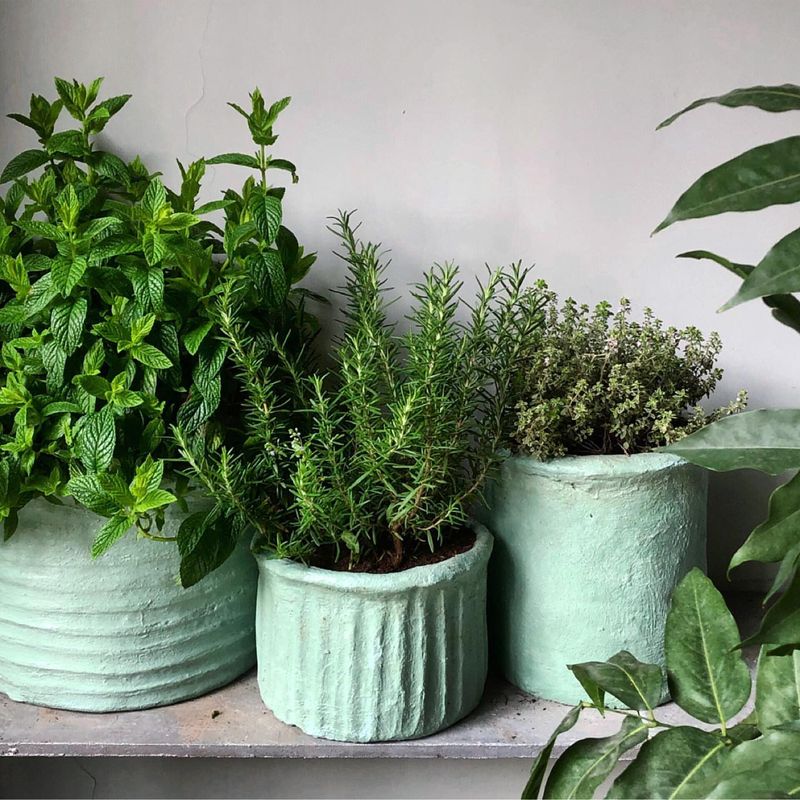Here in my Michigan garden, the shorter days of late summer signal it’s time to preserve those fragrant herbs before frost claims them. Walking through the rows of basil, thyme, and mint in early morning brings back memories of my grandmother teaching me to tie bundles of oregano from her backyard patch.
Summer herbs are too precious to waste, especially after months of tending them through heat waves and summer storms. I still remember my first attempt at freezing chives – chopping them with dull scissors and ending up with a mushy mess instead of the bright green flakes I was hoping for.
With a few simple techniques, you can enjoy the flavors of your garden herbs long after the growing season ends. Whether you have a sprawling herb garden or just a few pots on a sunny windowsill, these preservation methods will help you make the most of your aromatic bounty.
1. Harvest At The Perfect Moment
Morning collection yields the best flavor, just after dew has dried but before the day heats up. This timing ensures oils remain concentrated in the leaves rather than evaporating in midday sun.
Snip herbs with clean, sharp scissors rather than tearing them. Look for healthy stems without brown spots or flowering tops, which can make herbs taste bitter.
My Michigan neighbors often joke that you can tell it’s harvest day when you see me wandering the garden at 7 AM with coffee in one hand and pruning shears in the other.
2. Freeze Herbs In Oil Cubes
Chopping herbs and mixing them with olive oil before freezing preserves both flavor and color brilliantly. Fill ice cube trays about 2/3 full with chopped herbs, then cover completely with oil.
Once frozen solid, pop these flavor bombs into labeled freezer bags. Each cube equals about two tablespoons of fresh herbs, making cooking measurements simple.
Basil, parsley and cilantro work especially well with this method, while woody herbs like rosemary and thyme are better suited for other preservation techniques.
3. Create Flavorful Herb Salts
Layering fresh herbs with coarse sea salt creates a seasoning that captures summer’s essence. Start by alternating thin layers of herbs and salt in a glass jar, letting it sit for two weeks.
The salt draws moisture out while absorbing the herbs’ essential oils. Once completely dry, blend the mixture in a food processor until it reaches your preferred texture.
Last winter, the rosemary-thyme salt I made from my garden brightened countless roast chickens and potato dishes, bringing a taste of summer to our Michigan dinner table during snowy evenings.
4. Master The Art Of Air-Drying
Gathering small bundles of herbs and hanging them upside down preserves their oils without electricity or special equipment. Secure stems with twine, creating bunches no thicker than your thumb to prevent mold.
Choose a dark, dry spot with good air circulation – too much light fades color and diminishes flavor. A spare closet or unused pantry works perfectly for most Michigan homes where basement humidity can be problematic.
After two weeks, when leaves crumble easily between your fingers, strip them from stems and store in airtight containers.
5. Blend Custom Herb Butters
Softened butter becomes a preservation medium that locks in fresh herb flavors while creating an instant flavor boost for future meals. Finely chop herbs and mix them into room-temperature butter, along with a pinch of salt.
Roll the mixture into logs using parchment paper, then freeze. Simply slice off coins of herb butter whenever you need to elevate vegetables, meats, or bread.
During Michigan’s cold months, nothing brightens a plain baked potato like a melting pat of garden chive butter made during summer’s abundance.
6. Preserve In Vinegar And Oils
Steeping fresh herbs in vinegar captures their essence while creating gourmet ingredients for your kitchen. White wine vinegar works beautifully with delicate herbs like tarragon and chives, while apple cider vinegar pairs wonderfully with stronger herbs like oregano.
For oils, heat them first to reduce spoilage risk. Pack sterilized bottles with herb sprigs, then completely cover with warm (not hot) oil.
My Michigan cooking club always exchanges these herbal infusions during our annual harvest potluck – each bottle telling the story of someone’s garden.
7. Dehydrate For Maximum Longevity
Electric dehydrators provide consistent results when preserving larger herb harvests. Arrange clean, dry herbs in single layers, then dry at the lowest temperature setting (usually 95-115°F) until completely crisp.
Proper dehydration retains more color and flavor than air-drying. Michigan’s late summer humidity can make air-drying challenging, making dehydrators especially valuable here.
Store dried herbs whole rather than crushing them immediately – they’ll retain flavor compounds longer, and you can crumble them as needed throughout winter months.
8. Make Herbal Ice Cubes
Herbal ice cubes transform ordinary drinks into refreshing garden-inspired beverages year-round. Simply chop your favorite herbs finely, place a pinch in each compartment of an ice cube tray, and fill with water. For extra flavor, try using lemonade or fruit juice instead of plain water.
These frozen herb cubes work beautifully in cocktails, lemonades, and even plain water. Mint and basil cubes cool down summer drinks, while rosemary and thyme add unexpected warmth to winter beverages. The freezing process locks in essential oils and flavors remarkably well.
Fun fact: Ancient Romans used to cool their drinks with mountain snow, sometimes flavored with herbs – you’re continuing a tradition that’s thousands of years old!
9. Create Potted Herb Gardens Indoors
Transition your favorite herbs from garden to windowsill before the first frost arrives. Select healthy plants without signs of disease or pest damage, then carefully dig them up preserving as much of the root system as possible. Replant in containers with good drainage using quality potting soil.
Place your newly potted herbs in a sunny south-facing window where they’ll receive at least 6 hours of sunlight daily. Basil, parsley, chives, and mint adapt particularly well to indoor conditions. Remember that indoor air tends to be drier, so mist herbs occasionally or use a pebble tray with water beneath pots.
Harvest sparingly during winter months to allow plants to maintain their strength until they can return outdoors in spring.

